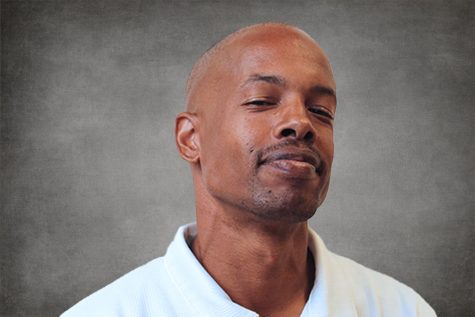Visual Impairment enhances confidence
Lack of perfect eyesight does little to limit fashion sense, promotes personal growth
Nov 1, 2017
For some, it’s a pre-planned ordeal carried out with meticulous precision. While for others, choosing what to wear each day is little more than a roll of the dice — or a shot in the dark.
According to California Community College Chancellor’s Office online database, DataMart, as of fall 2016 there were 373 students with disabilities enrolled at CCC, yet only 24 are blind or visually impaired.
According to the American Foundation for the Blind, there are over 700,000 visually impaired people in California.
Despite having diminished sight, visually impaired students at CCC have a perfectly clear image of their own bodies and the way they present themselves at school or in the outside world.
“I’m partially sighted so I can see what I’m grabbing, I know what one print is compared to another,” early childhood education major Kayla Kidwell said. “There is not any special thought that goes into it, I just want to look good like everyone else.”
Each morning these students wake up with the same question faced by millions of people across the country — what am I going to wear today?
There is no one-size-fits all strategy that people with impaired vision can employ to perfect the skill of differentiating a black sock from a navy blue one. Nor are their braille photos to display the latest trends in fashion.
At CCC, a many of the outfits worn by visually impaired students are more stylish than those of sighted students.
“ As far as fashion goes, I get advice from my sister, but it all comes down to personal preference,” psychology major Michelle Yoo said. “Also, I can feel the fabric and memorize the color of the item after I’m told what color it is.”
The art of choosing what to wear can take some trial and error and experience does not come without some mishaps.
DSPS instructional assistant and recent CCC graduate Pat Hatterman (who also has limited vision) said she has misjudged clothes or accessories in the past and that sometimes her daughter helps coordinate outfits with her.
Hatterman has devised an ingenious plan to assure the percentage of fashion setbacks occurring in the future is lowered exponentially.
“I have black pants and navy blue pants, which can be harder to differentiate, so I put a safety pin on the waist of the blue ones,” she said. “Also, I hang my green blouses by the pink ones and the blue ones by the white ones because if I hang them near each other they are harder to tell apart.”
Many of the students have embraced technology as a tool to assist in daily activities.
Mobile apps use video to pair users with sighted volunteers to offer assistance in identifying things out of the users range of vision.
“I used the app recently when I was reading a piece of mail and I couldn’t make out the print on the bottom of the letter,” Yoo said.
There are also apps that allow users to point the camera at an item of clothing with the color announced over the phone.
Seeing what is inside first, like the visually impaired students on campus, seems to be a true method of finding out where beauty standards come from and what it truly means to love oneself.
Without being inundated by targeted advertising, promoting an unrealistic sense of what modern beauty represents, visually impaired students on campus have a healthy sense of beauty, confidence and self-worth.



Megan Kinney • Nov 2, 2017 at 9:55 am
Great article! I’m really inspired by a graduate of my alma mater who is designing clothing for people with visual impairments: https://www.youtube.com/watch?v=vPCNeLlFwsM